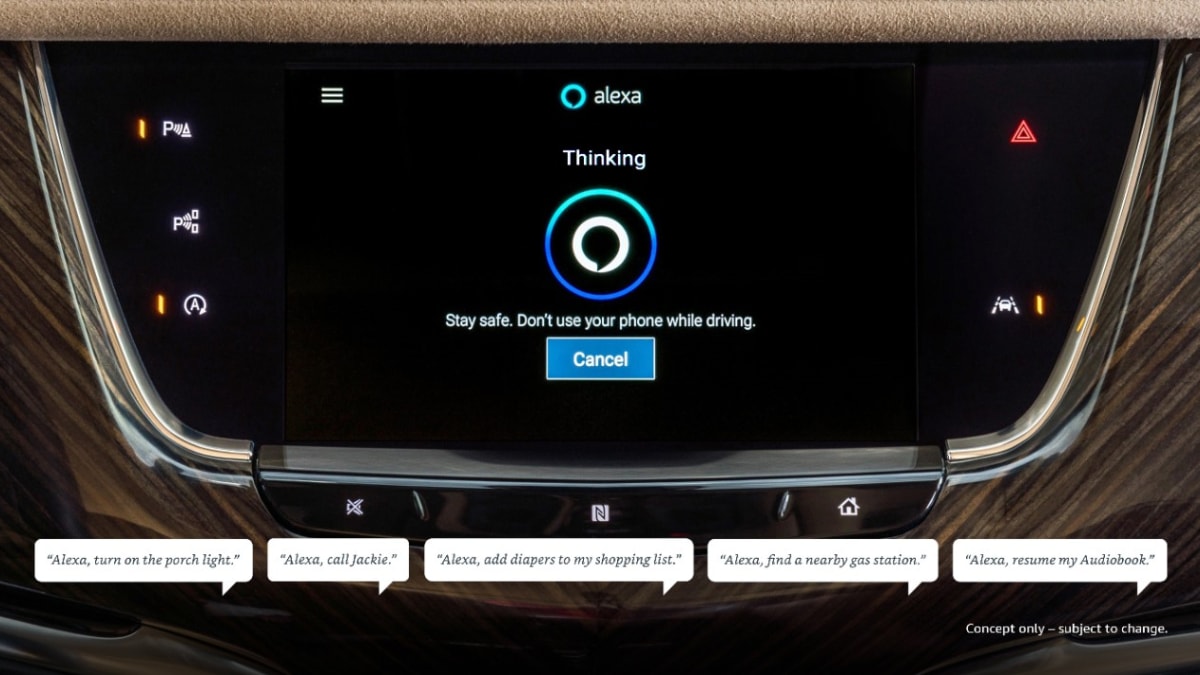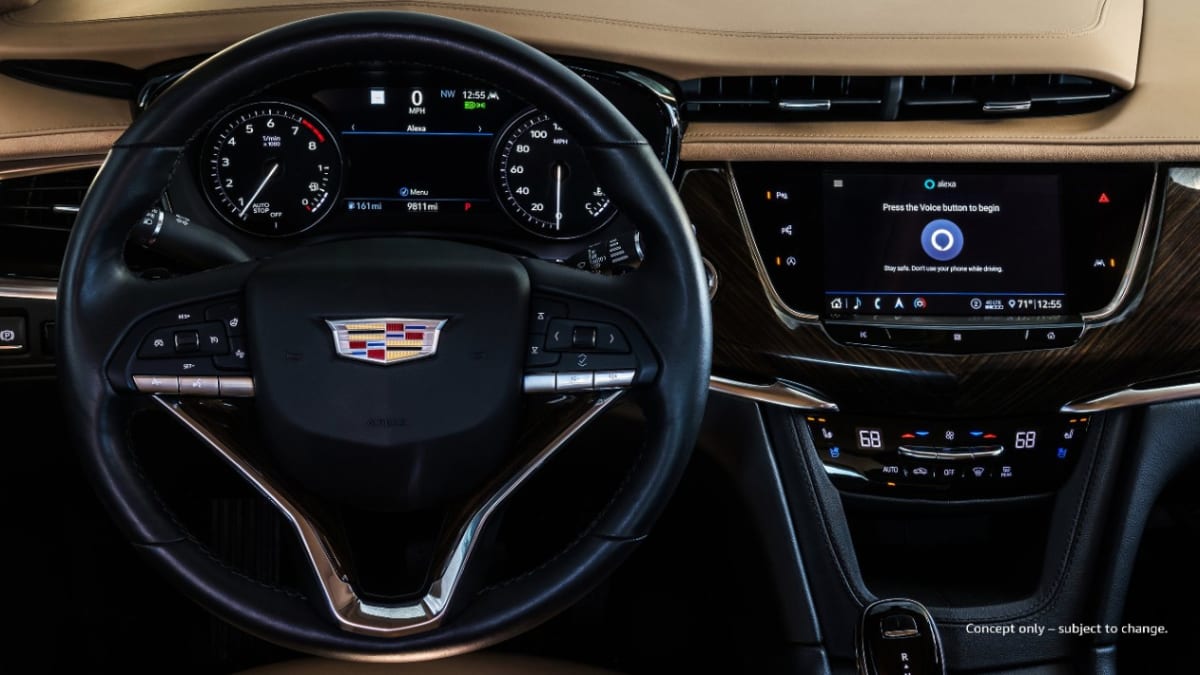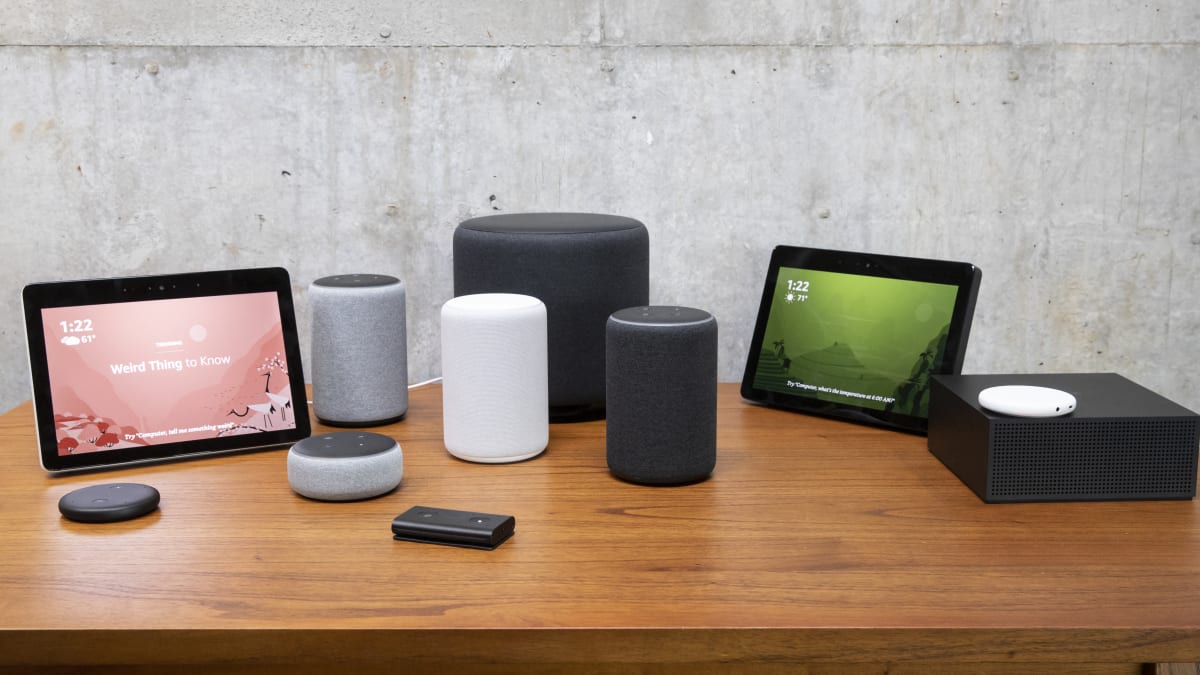Audi Repair Shop Doylestown
Call 267 279 9477 to schedule a appointment
SEATTLE — On the 30th floor of Amazon’s glass tower, in a room with a breathtaking view of downtown Seattle, there’s a beautiful bed that nobody sleeps in. It’s near a kitchen nobody cooks in, a living room couch that no one crashes on, a kitchen table that doesn’t host any family meetings. It’s Amazon’s Smart Home Lab, a place where every Alexa-enabled gizmo the company or its partners can produce is crammed into the same space, ostensibly for Amazon to test.
The company invited us there to show us the company’s vision for consumer products to leverage Alexa’s voice interaction software before taking us down to a demo of its latest implementation in a Buick Encore GX. In this eerie simulacrum of a fantastic luxury apartment, however, nothing went right the first time.
It’s a challenging environment for Alexa to work correctly, our hosts noted, pointing to the fact that there were six wifi networks available for the devices to connect to. In a normal home, one wifi network controls all the devices, who can theoretically sort out for themselves which one you’re actually trying to activate. In the Smart Home Lab, any unmuted Alexa device thinks it’s in charge. Even so, the connected toaster wouldn’t connect. The Fire TV Cube wouldn’t play a song. Our handlers futzed with everything, muting and unmuting devices, repeating commands, making us feel better about our own struggles with similar technologies. If it doesn’t work right at Amazon HQ, maybe it’s not just us!
It’s telling that down on the faux lawn, in between the gleaming Amazon spheres that host a billionaire’s tropical garden and the Day 1 building that the Smart Home Lab resides in, the Buick’s Alexa implementation doesn’t use a “wake-word” at all. The familiar Push to Talk button on the steering wheel, which normally activates General Motor’s own proprietary voice command system, can be set to default to Alexa when that rolls out to GM vehicles in the first half of 2020 via an over-the-air (OTA) update.

Given the reluctance of Alexa to respond to its wake-word in the comfort of Amazon’s own lab, we hoped that this was by design. Drivers are already familiar with Push to Talk, and a physical button is more reliable than the vagaries of contemporary voice recognition – not to mention the privacy and accuracy issues involved with always-on mics. Our experience with the not-ready-for-primetime Mercedes-Benz MBUX system is illustrative. It seems, however, that the advantages of the Push to Talk arrangement aren’t fully appreciated, as Amazon and GM are hoping to roll a wake-word out in a post-release update. Perhaps the algorithms will be more sophisticated by then.
Other than a poor connection that stymied several queries, the Buick’s Alexa assistant worked like a charm. Push to Talk never failed to wake Alexa up, and the virtual assistant seamlessly made a phone call, found nearby restaurants, and answered questions about the weather. More importantly, like other voice command systems, it offered the promise of nearly distraction-free interaction with the infotainment system, which on GM products does not have a secondary input interface. If you need to interact with the screen beyond what the steering-wheel mounted buttons can do, you’re touching it. And if you’re touching it, you’re taking your eyes off the road. With GM’s own voice command system, or Alexa’s more powerful natural speech recognition, much of that is behind you.

As long as you’re within the bounds of what Alexa is capable of in the vehicle, which at the moment are mainly functions you would have used a paired smartphone for – calling, navigation, playing media – as well as interacting with anything else you own that’s Alexa-connected. For example, want to know if you actually shut your garage door? If the opener is hooked up to Alexa, your Alexa-enabled vehicle can check. Or close it for you. Or tell you if the front lights are on, if the smart oven is off, and so forth. There’s convenience and utility in such a connected ecosystem, sure. Those who own enough Alexa-connected devices to derive the benefits will appreciate that – and Amazon and its partners are eager to sell you as many as possible. That also includes the Alexa Auto device, which promises similar functionality to GM’s Alexa app in a standalone unit.
What’s more difficult to appreciate is the prickly subject of privacy and data. These services can only operate by collating and processing a significant amount of user data, data that can clearly be mined for myriad purposes. It’s the subject of a recent Washington Post investigative piece that really lays bare how automakers (and suppliers in the ecosystem, like Amazon) are taking ownership of this data and monetizing it, quietly, in the background.
Alexa is not a creation of corporate benevolence; Part of the deal is handing over the valuable data in exchange for convenience. That’s often why these devices seem relatively inexpensive. Making money on each device isn’t necessarily the strongest move for the company. Expanding and exploiting the pool of data is, although not necessarily protecting it from hackers.

Data is worth money. As WaPo puts it, “Cars now run on the new oil: your data.” It’s not the first oil-data analogy, but it’s the one that comes to hand, and it’s not the last time you’ll hear such an analogy made. Because it’s true: Data is money. Your data is valuable. The cars know where you go, they know who you call, they know what you buy. So does the automaker. And what the automaker (or device manufacturer) do with that highly personal data isn’t subject to much scrutiny beyond the occasional investigative article. It’s certainly not regulated at a federal level. There’s a Patient Bill of Rights, but there’s no Personal Data Bill of Rights.
What is our data worth? Given the level of secrecy by companies selling our data to each other, we couldn’t tell you offhand. But how much convenience or enhanced safety is worth giving this valuable data to these companies for free? That’s really the fundamental question, and it’s also very hard to answer. Our gut is that these systems will be strongest for consumers and drivers where they can legitimately reduce distraction, thus increasing safety. Even the best touchscreen infotainment systems demand attention that drivers don’t have to spare.
GM’s Alexa integration could, with future over-the-air updates, allow Alexa access to more of the vehicles’ core functions. There’s no reason that Alexa couldn’t turn up the wipers or activate seldom-used functions that are sometimes hard to find. It’s just a matter of allowing the software the ability to communicate with the hardware, and giving the companies enough of the required information to turn voice commands into reliable actions in the vehicle. The ease at which Alexa – and, for that matter, other voice assistants like Apple’s Siri – can accomplish simple infotainment tasks within their core competencies in a vehicle are promising. Amazon is clearly willing to invest the cloud processing power and development time to accommodate whatever the automakers want to do in their implementations, making their Software Development Kits (SDKs) and Application Programming Interfaces (APIs) readily available to develop new applications and products.
In fact, Alexa Auto partner Elektrobit showed us a version of last year’s CES demo rig, a simulation of a hypothetical autonomous car that uses Alexa voice command for highly advanced functions. It asks the driver to surrender control for autonomous mode and warns when the driver needs to resume control. It’s a vision of a much more interactive, voice-driven interface that’s a very long way off. And yes, Alexa had wake-word trouble in this carefully crafted demo, too.
What’s less clear is, as these systems become more powerful, whether they’ll become as essential to the vehicle as it was in the Elektrobit demo. When Alexa rolls out to GM vehicles in the first half of 2020, owners of any vehicle with a compatible infotainment system will automatically receive the update. But utilizing it will require opting in, linking an Alexa account, and setting it as the default voice command interface – a very clear opt-in. It may not always be so voluntary.
Amazon wants consumers to think of Alexa as unlocking an economy of convenience. We want you to think of these systems as transactional, where you reveal a staggering level of information about yourself to companies with opaque data policies. It is those companies that reap the financial benefits of said data, not you, in exchange for the mostly impressive wizardry of speech recognition and interactivity.
We want to be clear that given the opacity of the big players involved, we are not sure who’s coming out on top in that transaction. Given the immense power and profit motive of the companies producing these products, we doubt it’s you.
Related Video:
from Autoblog https://ift.tt/2ZcIj4E

